As a homeowner, water is a huge part of your life. You use it to water your lawn, take a shower, drink, and even beautify the exterior aesthetic with fountains or streams.
However, excess water can cause a lot of problems, especially when you get heavy rain. If you have surface water on your property, that can lead to flooding, water damage, foundation damage, soil erosion, and even an abundance of mosquitos.
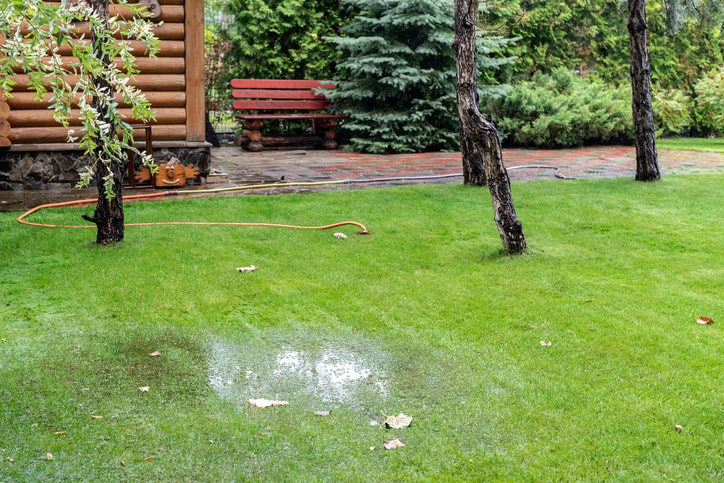
If you are seeing the detrimental effects of having too much water on your property, it’s a good sign that something needs to change. You might want to have someone install a French drain, trench drain, or any other type of water drainage, which can direct water from your property to any other suitable location.
Fortunately, OKCrete is really good at putting drains in place for people who live in either Tulsa or Oklahoma City. These drains can help you prevent erosion and other major water issues.
How Do Drainage Systems Work?
Drainage systems are structures that you can put in place to direct water to another area where it’s not going to cause problems. These systems usually take advantage of gravity to get the job done.
There are several types of drainage systems, and it all depends on what you need. If a lot of the problem is on your yard, you’ll probably want to install a French drain. If the water is causing problems on your driveway, you might want to consider a system that is made for concrete like a drainage trench or a permeable surface.
Here are some common drainage systems.
French Drain
A French drain is a drainage system situated underneath the ground. It has a simple, yet clever design that enables the water on top of your property to seep down into a drainage pipe. From there, water is taken away from that part of your property.
It’s able to do this thanks to the fact that it’s a perforated pipe surrounded by gravel.
How The Perforated Pipe Makes French Drains Work
A perforated pipe is a drainage pipe that has holes in it. We realize this might sound strange, but it’s a big part of how a French drain system works.

Check out the image below. French drains are made up of three parts:
- The perforated pipe (the big circle in the middle)
- Gravel that surrounds the pipe (tiny grey circles)
- Water permeable fabric that holds it all in (lines of the outer square)
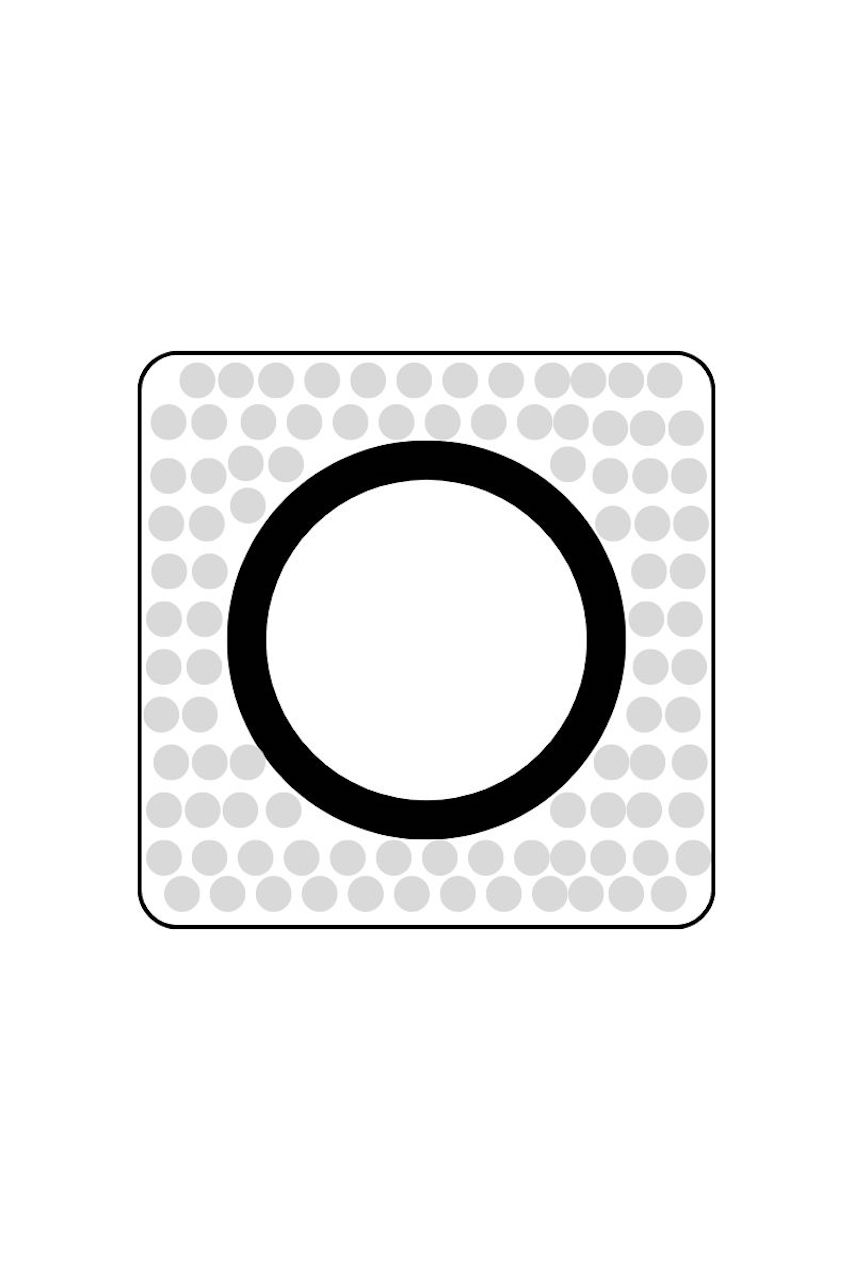
Notice how there are spaces in the gravel. When the water seeps through the fabric, the first thing it will do is fill in those spaces. Then water enters the perforated drainage pipe through the holes. From there, the collected water will flow through the downward slope to another area.
The drain pipe can take it to a number of places, including the road, a nearby sidewalk, or down a municipal drain.
By allowing water to fill in those spaces first, you are preventing excess groundwater from building up. This frees up space for the water on top to flow freely down toward the drain pipe.
French drains allow you to keep water out of your yard and prevent soil erosion.
How We Install A French Drain
The first part of French drain installation is digging where the French drain is going to be. This sounds easy enough, but there’s quite a bit to it. There are a few things we need to ensure as we dig:
- We are digging deep enough for the french drain system to work.
- We are working with the right amount of slope.
- We are not hitting any cables or underground wires.
When we are done digging and making sure everything’s at the level we need, we lay out the fabric in which we will wrap the entire French drain. Then we lay down the pipe and dump the stone gravel over the top.
After that, we carefully wrap all of it up with the fabric, tying it up or taping it as we go. We need to make sure all of the gravel is covered up because when we put the soil back over it, we need to keep as much of it out of the French drain as possible.
Keeping Water Out of Your Home
The type of drainage system we were just discussing was an example of an exterior French drain. However, some French drains aren’t about keeping water out of your yard or your neighbor’s yard. Instead they are meant to keep water out of your home.
At OKCrete, we offer interior French drain installation. They have a similar design, but they are installed near your garage or basement, which are two places where water tends to accumulate.
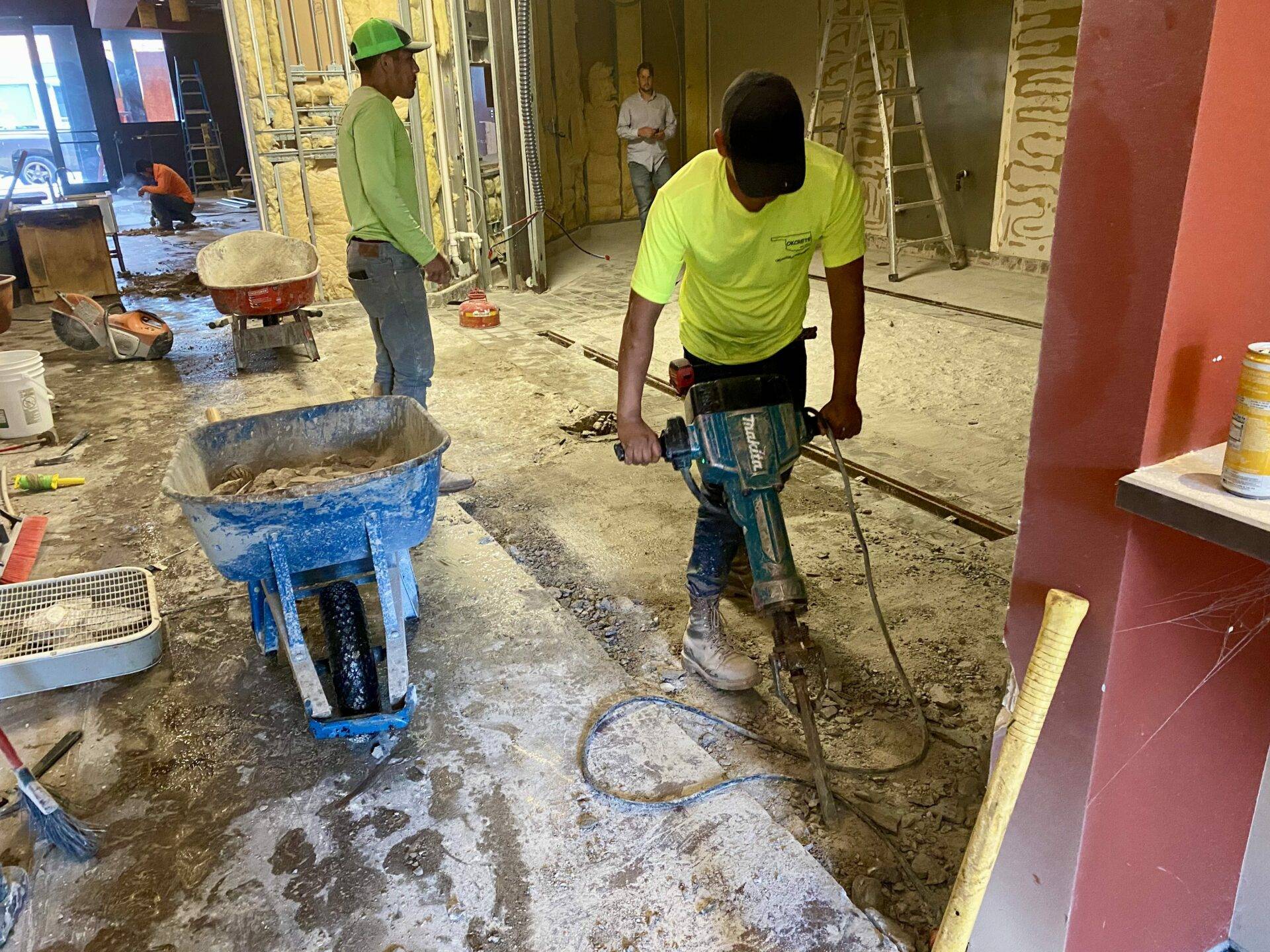
What Is a Trench Drain System?
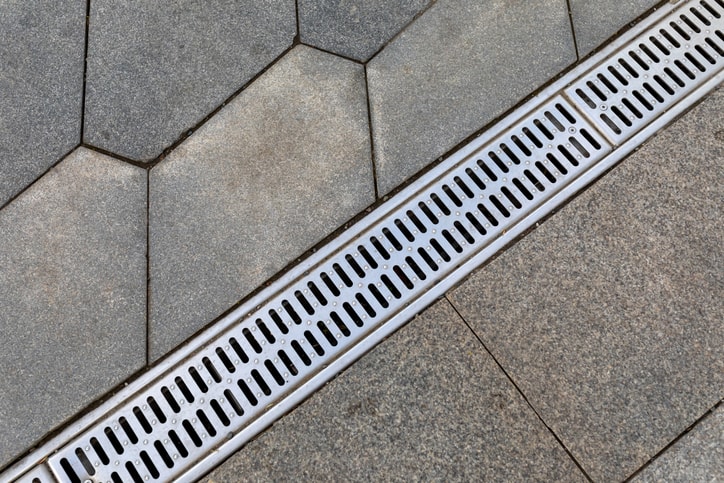
Another type of drain system is called a trench drain system, also known as a channel drain. This is one you’ve undoubtedly seen before, whether it’s on a residential property or outside of a business.
A trench drain is a skinny drain that is typically built into concrete and usually covered by a grate to keep debris and other drainage material from entering. It’s most commonly used for driveways where there is a slight slope towards your house.
Unlike French drains, anyone can clearly see these ones. So making it aesthetically pleasing can be a challenge.
It usually has a small pipe attached at the end of it, which can connect to pipes or any other designated outlet.
How Trench Drain Systems Are Installed
The first thing we do when installing channel drain systems is remove the concrete that’s already there. We realize that sounds really difficult, but we’re used to it. Our tools cut into the concrete easily, and we take it out from there.
Then we make sure everything is good to go for the trench to be installed. The trench itself is pre-made, and it comes in different sizes and styles depending on what your property needs. When we install it, we need to make sure it is positioned and leveled just right so that the water will enter into it.
Every installation is different depending on your property’s situation. If you already have a designated outlet, we may have to create one by digging another trench, installing another pipe, and connecting it to the channel drain.
Once everything is figured out, we mix new concrete, and then we fill it around the trench to keep it in place. Our goal is to keep a consistent appearance with the rest of the concrete.
Permeable Driveway Surfaces
This is another type of drainage that you can get outside your home. It’s essentially a reimagining of what your driveway is made out of. Instead of pure concrete, these driveways are made from materials that allow water can seep into little spaces.
A lot of the time, these are pavers that have pores in them.
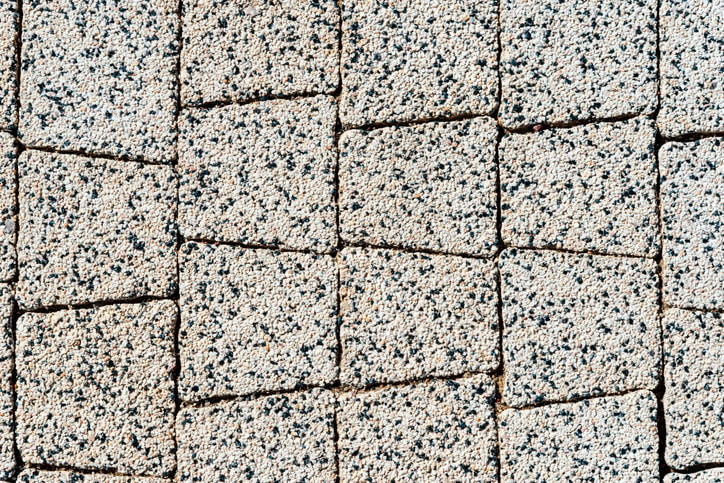
You can also cover your driveway with gravel, grass, or stone as well.

Slope Drainage Systems
Another type of drainage system might seem like an obvious choice for certain homes.
Slope drainage takes advantage of the design of your driveway if it is already sloped. It lets the water run down the driveway and to another designated outlet such as the road or a nearby drain.
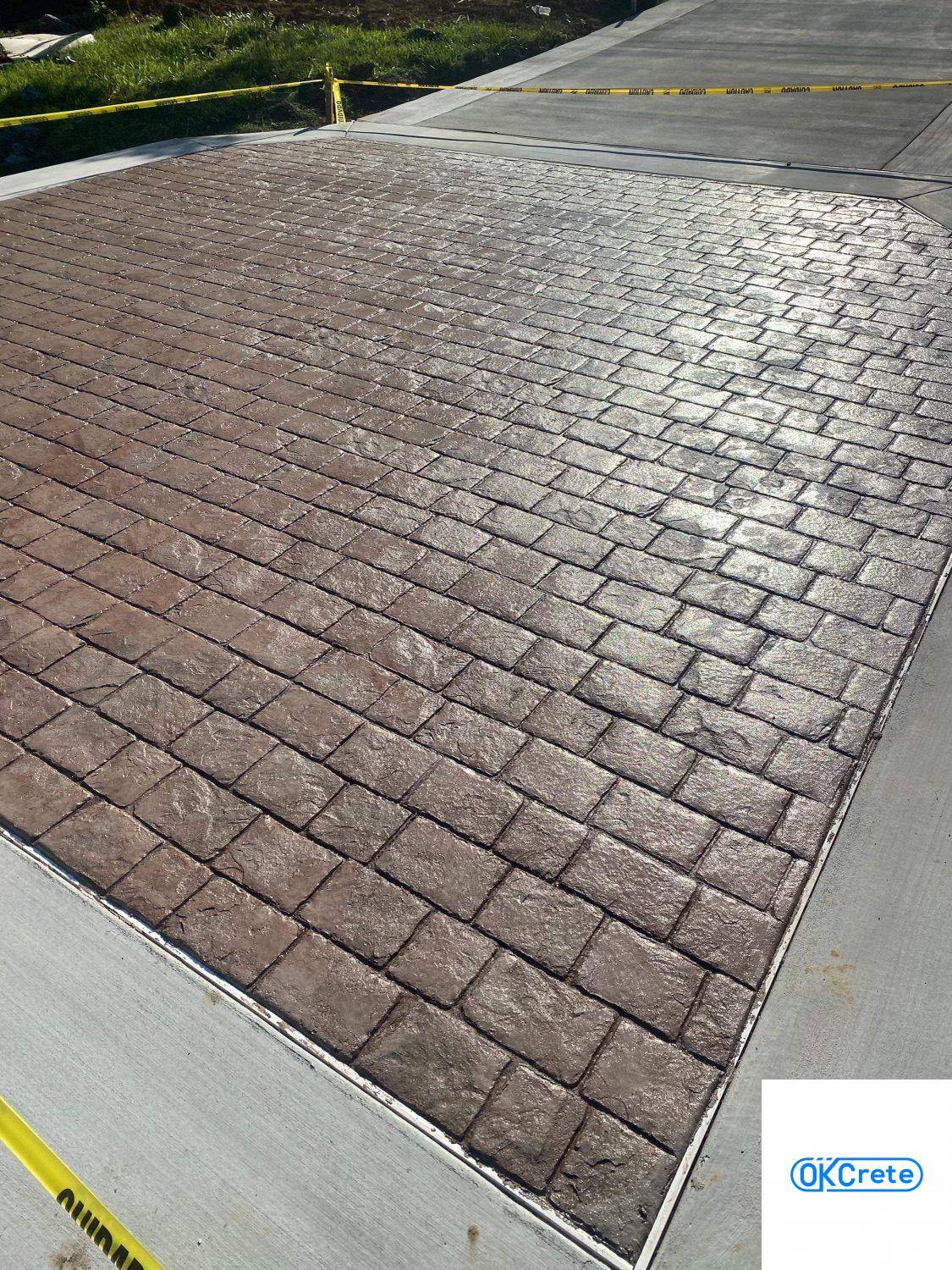
With this kind of drainage, we’ll sometimes install pipes that lead right to the driveway. The water will come out and flow down wherever it needs to go.
Drainage Experts Who Know What They’re Doing
If you live in the Tulsa or Oklahoma City areas, and you need to get rid of water on your property, look no further than the experts at OKCrete. Even if you don’t know what type of drainage would be best for your home, we’ll take a look at your property and help you make your decision.
We have been doing concrete and drainage projects for over a decade. Our work is always top quality, and our prices are affordable. We stop at nothing until you are 100% satisfied with the work we do for you.
We hope to work with you soon. Request a quote today!
